Labor Day is a relaxed holiday now, but history shows in RI, that wasn't always the case
- Oops!Something went wrong.Please try again later.
Labor Day, in Rhode Island at least, may be a holiday that has outlived its reason for being. It has become another day off, not a protest against violent working conditions.
But labor as an economic entity, as well as the struggles of organized labor, have their roots in Rhode Island.
Especially in Pawtucket.
It was there, in the early 1790s, that Samuel Slater helped Moses Brown and the Brown family realize their dream of building a water-powered textile mill, like those operating in England.
Slater's mill, on the Blackstone River, touched off the American Industrial Revolution, which would move the country's economy from the farm to the factory, transforming people from family farmers to employees.
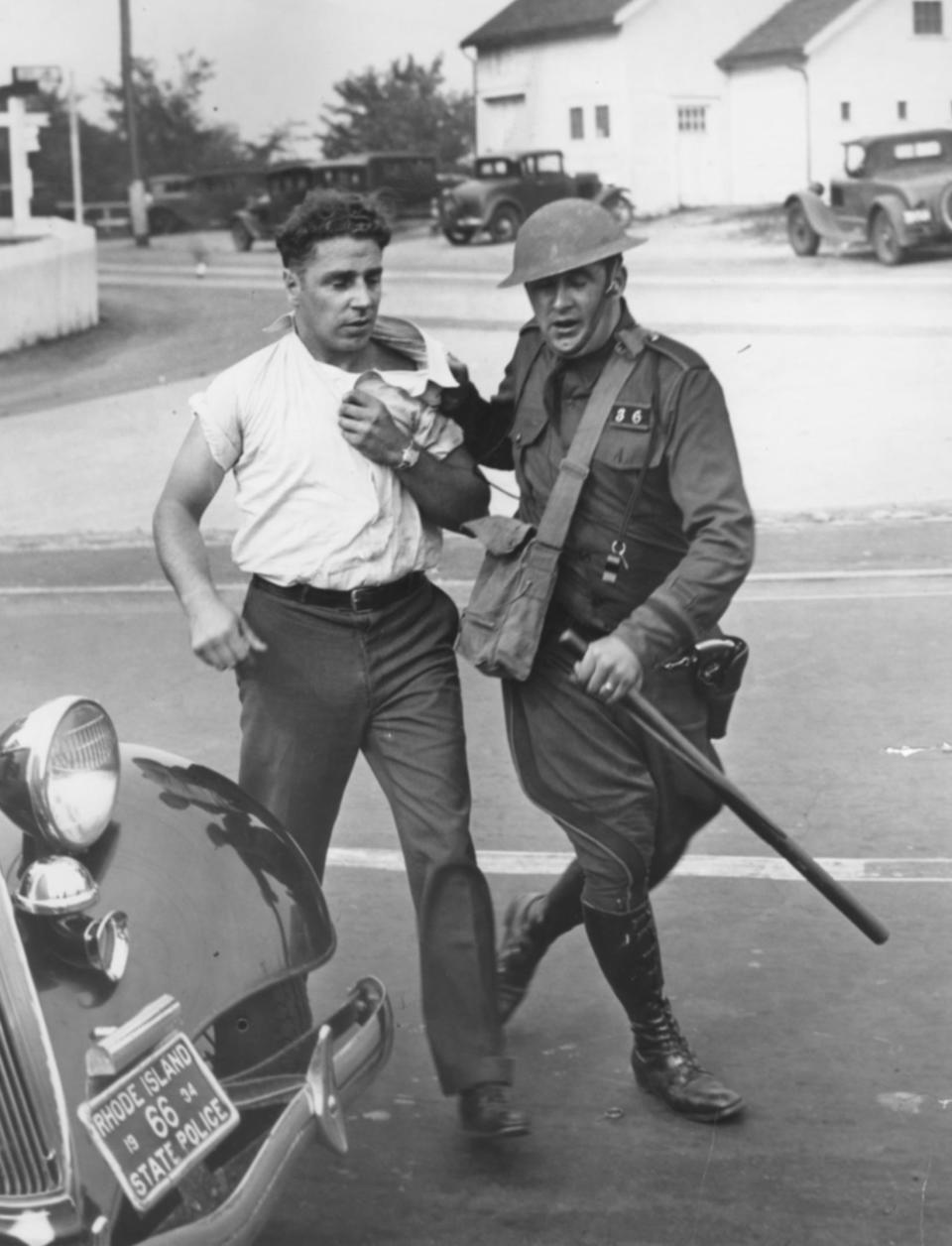
The U.S. first 'strike' was in Pawtucket - and it was led by women
Fast-forward three decades, and the village of Pawtucket is still at the heart of the Labor Day story, with what is recognized as the first strike by wage workers in the United States.
Women led this first labor action.
As external forces hit the fortunes of mill owners, they blamed economic conditions for a series of drastic changes to working conditions: Longer work days. Shorter meal breaks. A 25% cut in wages.
There were no unions or formal labor organizations at that time.
But one day in May 1824, about a hundred women working in the Pawtucket mills just walked out of work.
"These were young women who were basically teenagers," said Scott Molloy, a professor emeritus of Labor and Industrial Relations at the University of Rhode Island. "They expected mill owners to treat them with dignity."
Though these young women called their action a "turn out," a large number of textile workers, then other laborers in the village, joined them in the strike.
The modern labor movement was born.
Though the strike, from May 26 to June 3, was resolved mostly amicably — an incendiary device started a small fire in one mill — violence would mark labor struggles in Rhode Island and nationally for more than a century afterward.
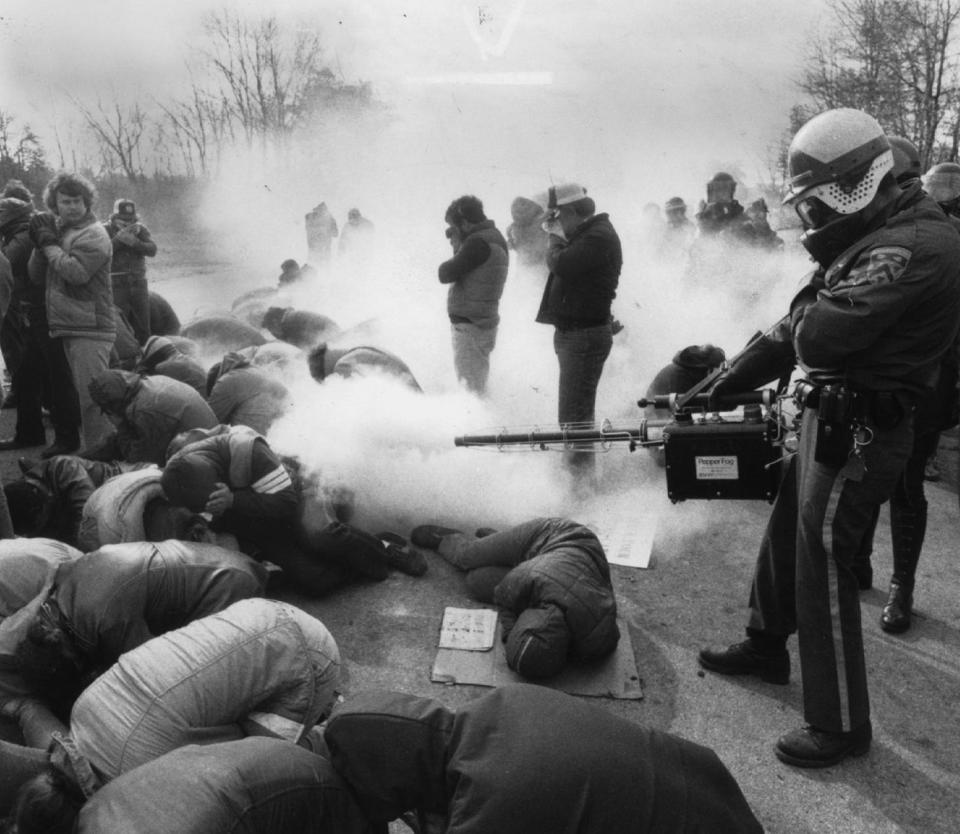
Pawtucket textile mill strike of 1922 involved the military, riots
In 1922, strikes broke out at textile mills across New England, and Pawtuxet Valley and Blackstone Valley in Rhode Island resembled war zones as Gov. Emery J. San Souci called out the military to maintain order at mills.
On the morning of Feb. 21, a thousand strikers and spectators gathered outside the Jenckes Spinning Company mill in Pawtucket, near what is now the MBTA commuter rail station.
Among those in the crowd was Joao d'Assuncao Jr., a 42-year-old clerk at a nearby grocery, who had left his wife and two young children in Lisbon, Portugal, when he immigrated to Valley Falls, a village in Cumberland just across the Blackstone River.
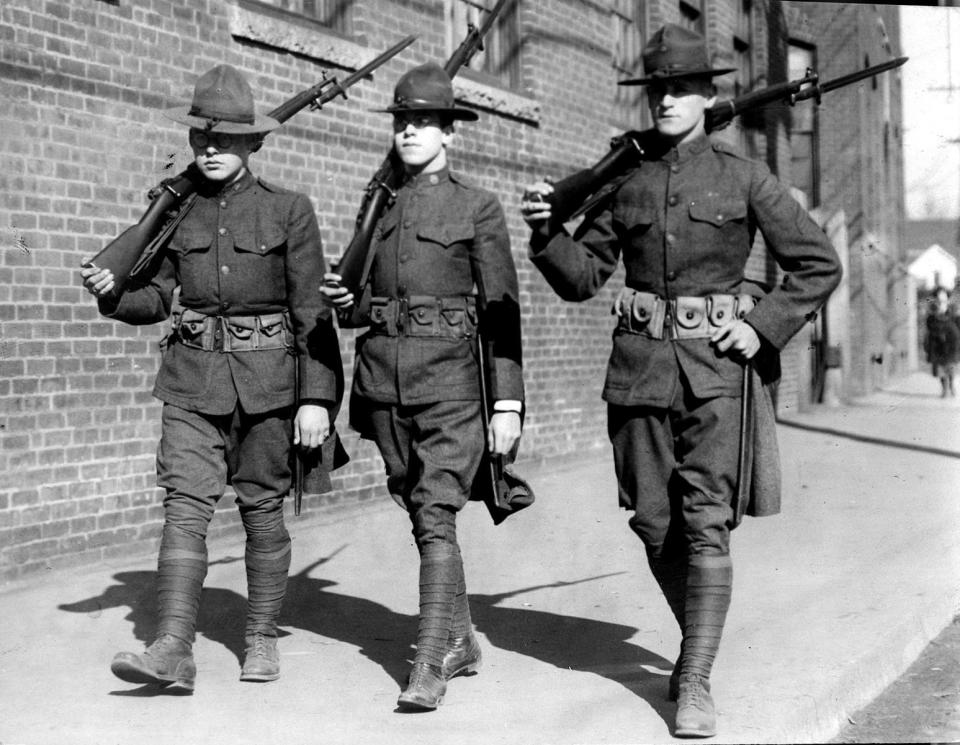
More: Looking forward to Labor Day weekend? Here are 11 events to check out around the state
D'Assuncao heard Mayor Robert A. Kenyon read the riot act. That only inflamed the crowd. Police and private security guards started shooting.
Several in the crowd dropped, critically wounded.
D'Assuncao, struck in the head, was killed instantly.
Two days later, 7,000 people descended on St. Patrick's Church on Broad Street in Valley Falls. Some 1,800 were able to squeeze inside for d'Assuncao's funeral, while the rest milled around outside the small church. Afterward, more than 4,000 people, led by a detachment of soldiers from Westerly with bayonets fixed on their rifles, paraded more than 4 miles to Mount St. Mary Cemetery in Pawtucket.
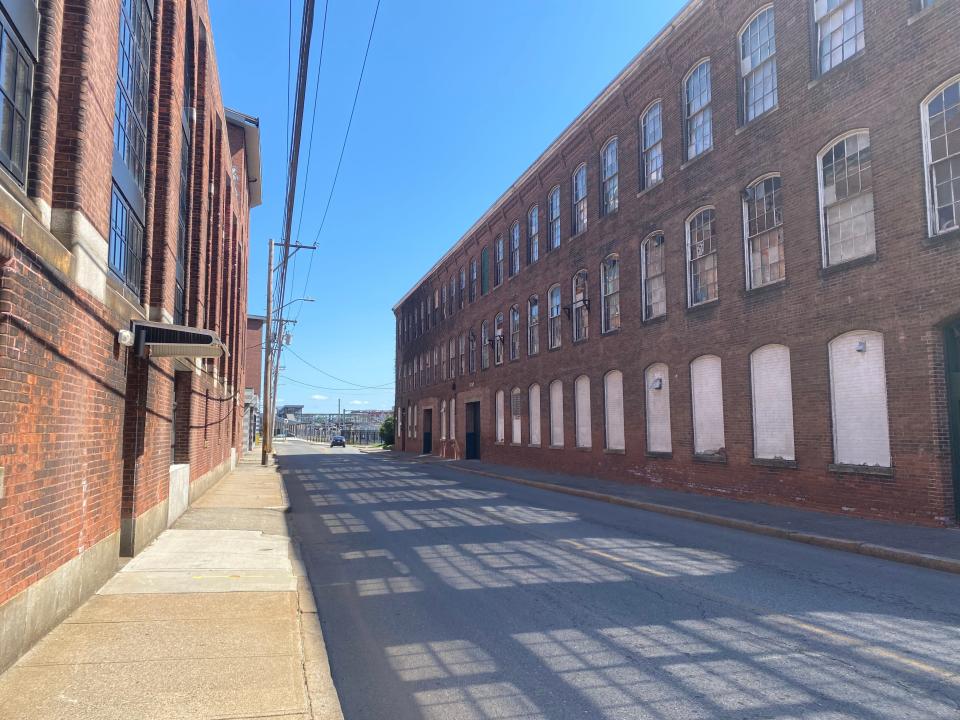
The Saylesville Massacre
Twelve years later, deadly violence broke out again in Rhode Island as part of a nationwide textile workers strike in September 1934, which hit particularly hard in Woonsocket and in Lincoln, where it was marked by a week of fighting in the streets, rock throwing and armed confrontations.
In what has become known as the Saylesville Massacre, a striker and a bystander were killed by state militiamen near the Saylesville bleachery in Lincoln, and two others were killed in Woonsocket, which saw similar strike-related violence that September.
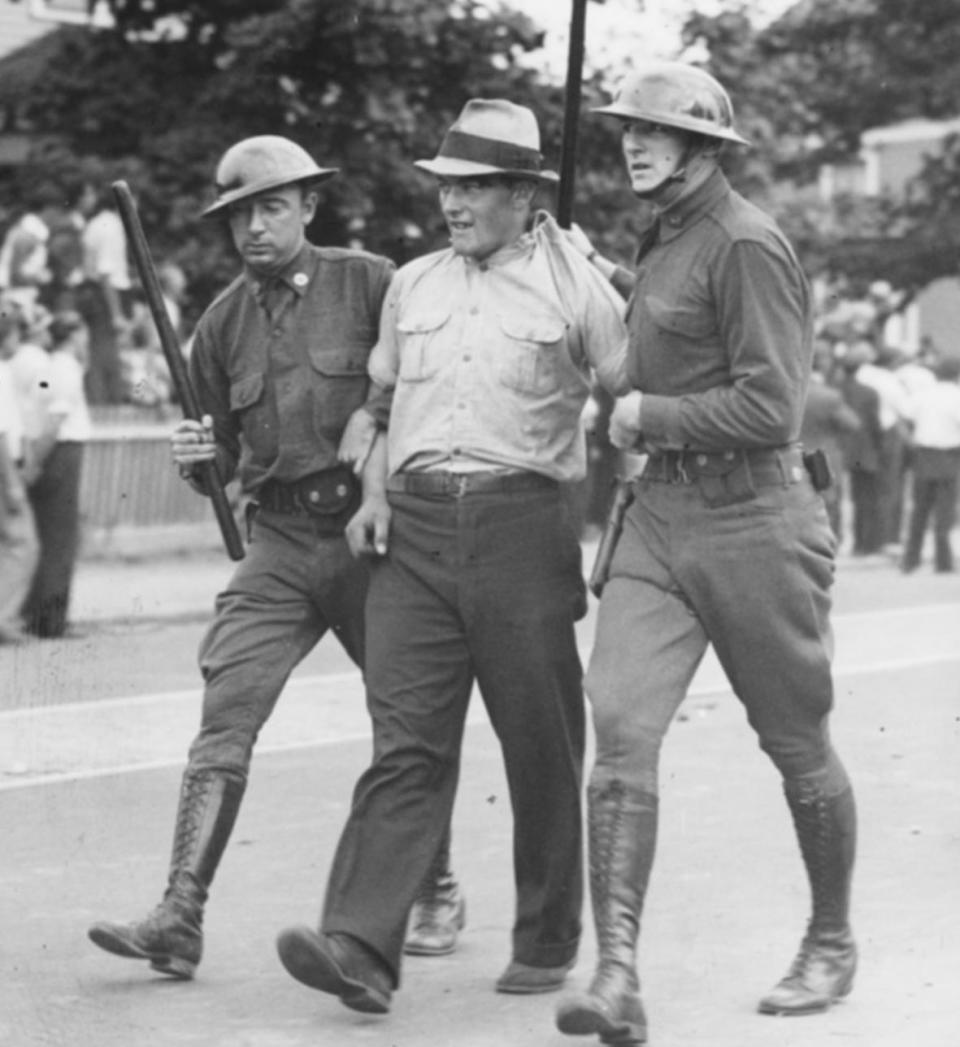
As in 1922, Rhode Island's governor sent in the troops to maintain order. But, unlike San Souci in 1922, history has been kinder to the governor in 1934, Theodore Francis Green, namesake of Rhode Island T.F. Green International Airport.
Labor historian Patrick Crowley, who's also secretary-treasurer of the Rhode Island AFL-CIO, wrote his master's thesis at the University of Rhode Island about the Saylesville Massacre.
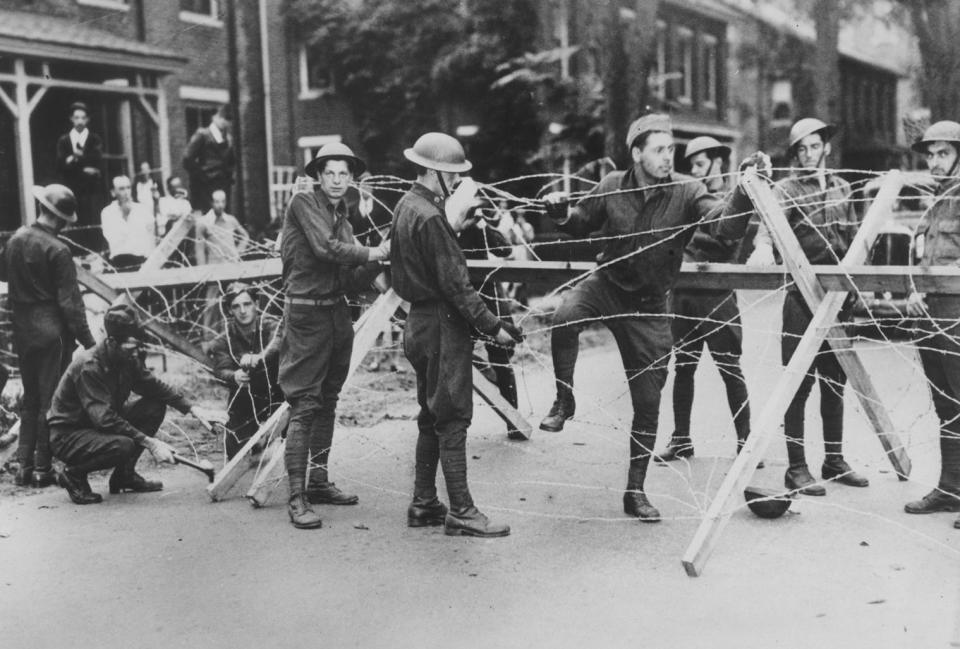
A watershed moment for the labor movement
Crowley says the national strike that year was a watershed moment for the labor movement and helped bring about tectonic change in the way workers and company owners dealt with each other.
The National Labor Relations Act of 1935 established workers' right to organize, recognized unions as the legal bargaining representative of their members and established ground rules on how unions and companies should interact. By establishing a mechanism for resolving disputes, it took a lot of the violence out of the process.
But that doesn't mean it never happens.
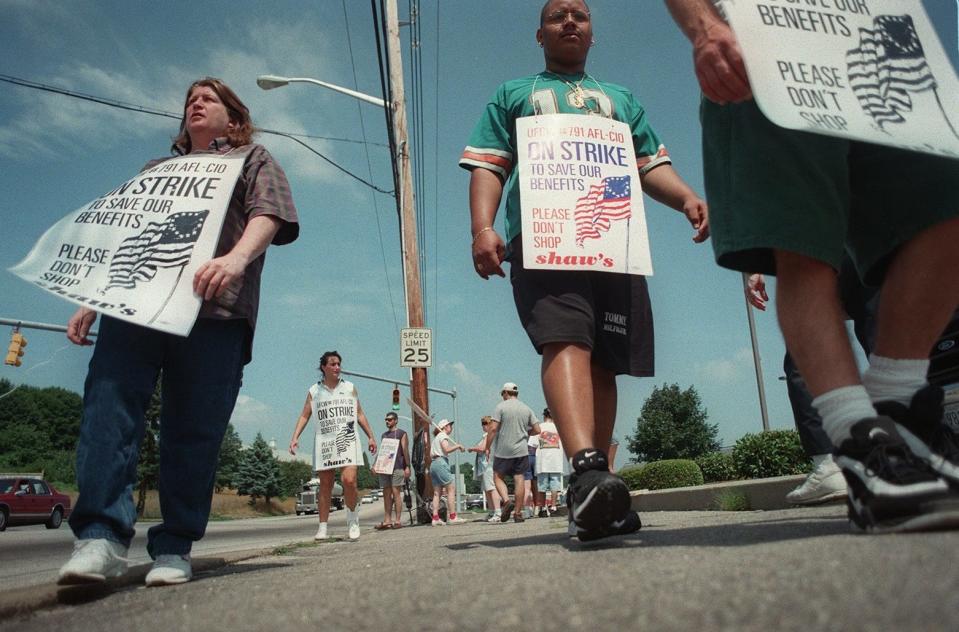
Just a year ago this month, tensions rose on a picket line in Pawtucket where Teamsters were striking against a contractor for DHL, the package-delivery company. As strikers picketed the company, they say the police pepper-sprayed them.
That may be a far cry from running street fights and the militia shooting at strikers, but Crowley said it's a reminder of the struggles of the labor movement that brought about the Labor Day holiday, first as a demonstration of union solidarity in 1882 in Rhode Island, then as a federally recognized holiday in 1894.
While in 2023 the holiday is more about spending time with family and friends at what may be the last cookout of the summer, Crowley said the low-key nature of a day off is a victory in itself, contrasting with a time when workers were on the job for 12-hour days, six days a week, with no days off.
This article originally appeared on The Providence Journal: How Rhode Island's labor union strikes shaped the workplace today

